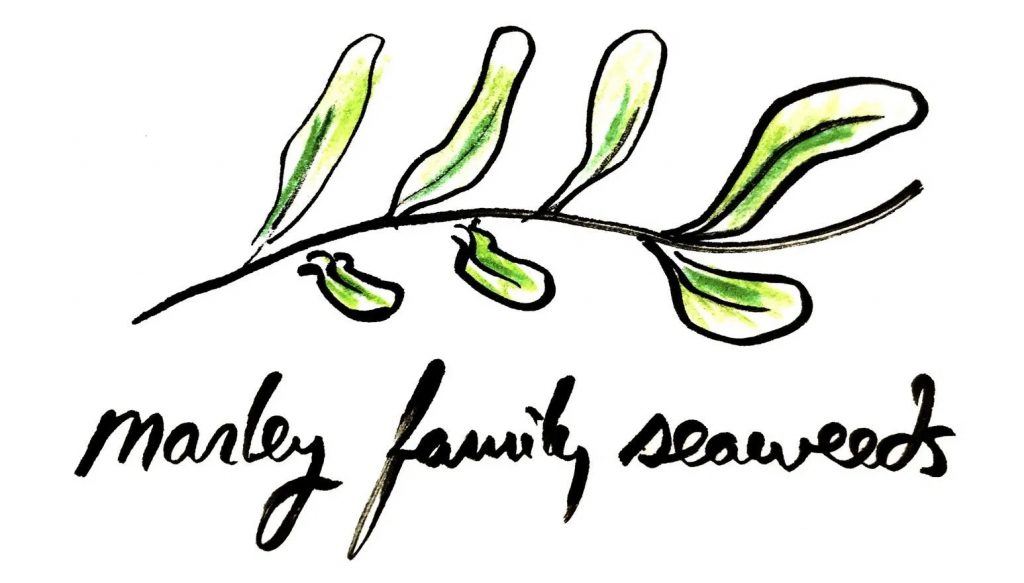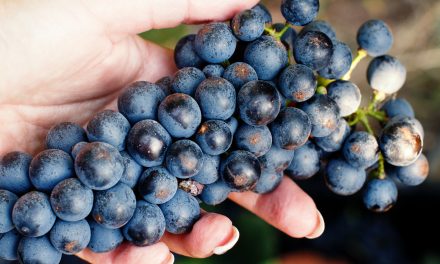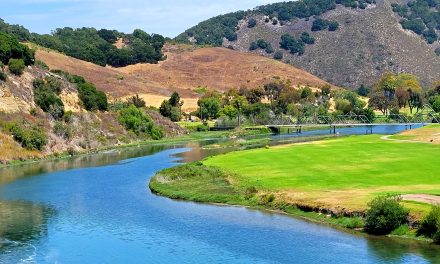Last month, we discussed how adding red seaweed (Asparagopsis taxiformis) to cattle feed can reduce Greenhouse emissions from cows and sheep, which come mostly from blenching and not out the other end, by 82 percent, which would lead to real, sustainable livestock production around the world. A little more looking into seaweed from a farmer’s viewpoint, taken from a report by Monica Danielle with AccuWeather, I didn’t realize that it is quite an important sustainable aquaculture farming product.
I was introduced to seaweed as a business back in the early 60s while at Cal Poly because my lifelong buddy and Best Man at my wedding, Doug Chan’. His uncle had a contract to farm seaweed in front of Cambria. Because no commercial outfit could harvest abalone in the top 12 feet, he allowed us to dive. It was like an abalone smorgasbord with 12 inch Reds for the picking. It developed into a nice side business supplying Cal Poly professors and neighbors in Avila with large fresh abalone steaks plus eating a bunch. When Maridel and I were married, I had to wait around for her to graduate six months later; we didn’t have much money, so we lived basically on abalone and Dintymore stew. She still can’t stand, going on 57 years, to look at or smell either one!

Over 30 million tons of seaweed, besides what is naturally found in the ocean, is grown around the world for many products. Naturally, you see it around here every time you are at the beach but probably just take it for granted and never thought much about what an amazing living organism it is. It is found in many products to include as a wrap around your sushi roll, ice cream, pharmaceuticals, cosmetics, building materials, food, fertilizer, and many more products. Seventy percent of the world’s oxygen supply comes from seaweed and algae.
Production has doubled over the last decade and had an estimated value of $60 billion a couple of years ago. It is separated into three colors – red, green, and brown and there are 12,000 species. Most seaweed farming occurs in China, Japan, North and South Korea, Indonesia, and other Asian countries. China is the biggest producer of seaweed, making up 60 percent of the total volume globally. The beauty of seaweed production is it doesn’t need fresh water, insecticides, fertilizers, and it grows like a weed (as in seaweed). However, it really isn’t a weed but algae that can grow an amazing two feet a day.
Unlike planting more trees in the fight against CO2, which is also very much needed in the right places, it doesn’t take away dwindling land suitable for food production. California agricultural producing land is worth $100 billion in agricultural activities from 75,000 ranches, and farm ground faces enough problems for more space, especially with the governmental overreach of Federal ownership at 48 percent of California’s 100 million acres of land along with the state’s 15 percent of land ownership, plus 47 percent of the subsurface mineral estate that is controlled by the CA Bureau of Land Management tying up millions of acres from farming, ranching, lumbering, and mining because, in many cases, of a lot of drastic unfounded or impractical environmental concerns. Surely, out of 100 million acres, maybe 10 percent at a minimum could be opened for grazing, farming, and especially for mining rare minerals, largely supplied and controlled by China, needed for the expected increase in electric cars, computers, industry, and most things that move or compute. I can’t imagine the governmental hoops to go through trying to put in a commercial seaweed farm along our coast no matter the ecological and financial benefits, but it would be worth the try. It is well known the Coastal Commission is a bit picky about projects in their domain. Those of you around during the Big Avila Cleanup 20+ years ago may remember dealing with the Coastal Commission to let us design our own town.
The best ecological benefit of seaweed is the huge carbon sequestration function in absorbing carbon emissions. The ocean is like a big sinkhole that soaks up CO2 from the atmosphere and chemically processes, and releases hydrogen ions. This makes the ocean water more acidic in the ocean’s normal stable environment. A little change in the pH (more acidic) can cause a big unhealthy impact on all the animals, plants, and algae.
Seaweed can and does help reverse acidification because it is photosynthetic and sucks up the CO2 out of the air, which is a beneficial fight against global warming, or whatever it is called now. Besides releasing the oxygen (O2) back into the atmosphere, it stores the carbon (C) in its body for long periods – hence the term carbon sequestration, which is becoming the big thing in agriculture with no-till farming, which used to be what we did in our old vineyard on San Luis Bay Drive.
Carbon farming, as part of sustainable practices, is starting to be interesting because of the move to pay farmers, of all stripes, from the carbon fund to help keep carbon in the ground or water and not in the air. I imagine a seaweed farmer could easily apply for a paycheck for locking up carbon and help with expenses. Wish I were younger.
Maybe number 7th generation California farmer grandson who is a fishing nut and out on the water weekly and after finishing up at Cuesta in Business next summer, serving in the Coast Guard for four years and seeing what is in the future for aquaculture, and maybe a G.I. Bill paid for Cal Poly Degree in Marine Biology or the like, will keep the farming string going and farm the “Weed.” For more information about local seaweeds, recipes, and perhaps go on a seaweed foraging tour (I’m taking my kids and grandkids soon), contact our local seaweed specialists, Marley Family Seaweed.






